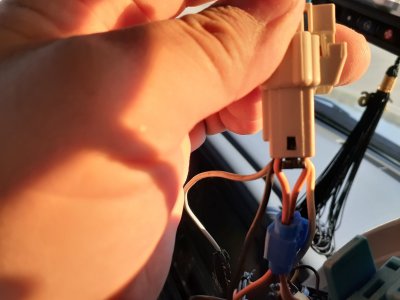This certainly will work, but what you have done is to bypass the BCM's ability to turn off the interior lights if they are inadvertently left on, hence the name of the circuit that powers these lights - Inadvertent Power (IP). The IP circuit supplies a low level current that is not enough to run down the battery and will not be enough to light a standard bulb, but since LEDs run on much lower power, they do come on, just at a dim level since it is very low power. The BCM senses current drain on this circuit and switches on full power for about 15 minutes (it will stay on if the engine is running until the light is turned off, then it resets). The LEDs do not draw enough current to reach the threshold for the BCM to switch on full power. This is why turning on the vanity lights (with original bulbs) will cause the reading lights to go to full brightness.
I solved this by adding a resistor in parallel with the LED that draws extra current to trigger the BCM, and then put a capacitor in series with the resistor which basically shuts off the current through the resistor after the capacitor is fully charged. This does cause the reading lights to slowly fade out when you turn them off. How fast they fade out is determined by the size of the capacitor. If you don't put a capacitor in series with the resistor, you must use a large power resistor, like 10W or so. Anything smaller will burn out. Even a 10W is going to get pretty hot. My first configuration without the capacitor resulted in the heat sink on the resistor melting through the plastic housing of the overhead console, and I had to replace the console housing.
It takes a 22Ω resistor to draw enough current plus the LED current to equal the current draw of a 194 incandescent bulb. I haven't experimented with what the largest resistor value could be used and still trigger the BCM, but the larger value you have, the lower power rating it can have. Lower power rating on the resistor means generating less heat.
To throw in a little Ohm's Law: Current = Voltage/Resistance and Power = Voltage x Current This is how you determine how many Watts the resistor needs to be rated for.

